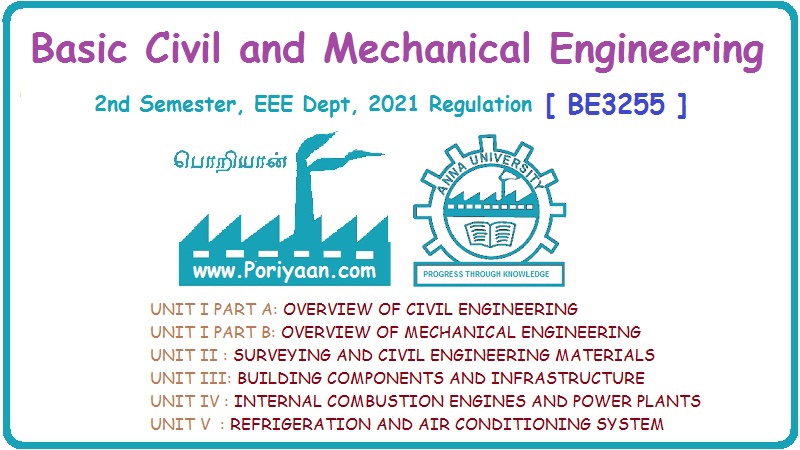Basic Civil & Mechanical Engineering: UNIT II: k. Cement concrete
Preparation of cement concrete
First, measure the ingredients, viz., Coarse and Fine Aggregates and Cement in proper proportions. Mixing of the ingredients with water should be done properly so that the mass becomes uniform and homogeneous. There are two methods of mixing.
PREPARATION OF CEMENT CONCRETE
1. MIXING CONCRETE
First,
measure the ingredients, viz., Coarse and Fine Aggregates and Cement in proper
proportions. Mixing of the ingredients with water should be done properly so
that the mass becomes uniform and homogeneous. There are two methods of mixing.
1.
Hand Mixing: For small works, mixing of concrete is
done by hand. Mixing of concrete should not be done on ground. It should be
done on a hard surface like a concrete floor.
2.
Machine Mixing: For large scale work, Concrete Mixers,
viz., Rotary Mixer or Tilting Mixer are used. The quality of machine-mixed concrete
is better than that of hand mixed.
Transporting
Concrete: After mixing, the concrete is transported to the
place of work. place of mixing and the place of work should be quite nearer to
each other.
2. PLACING AND COMPACTING CONCRETE
The
concrete is placed and compacted before setting commences. Segregation should
not take place while placing the concrete.
Compaction
or Consolidation of Concrete: The object of
Compaction of Concrete is to eliminate air bubbles and thus to obtain maximum
density to concrete. The strength of concrete is very seriously affected by the
degree of its Compaction.
Concrete
shall be thoroughly compacted during placing and thoroughly worked around the
reinforcement and into the corners of the Form Work. [Form Work:
For all concrete constructions, some sort of temporary staging, either of
timber or steel, is required so as to form mould or forms to hold the concrete
till it sets. Such a temporary staging is known as Form Work or Centering.]
Compaction is done either by Manual Method or by Mechanical Method.
3. CURING OF CONCRETE
Curing
of Concrete: Curing of Concrete is the process of
activating the hydration of concrete.
Purposes
of Curing
(i)
The process of hardening of concrete requires moisture. Water used for mixing
may get evaporated. Surface cracks may occur. Strength of concrete comes down,
if the concrete is allowed to dry. Hence, it is essential to maintain the newly
placed concrete moist for about 2–3 weeks.
(ii)
Curing reduces shrinkage.
(iii)
It increases durability and impermeability of concrete.
(iv)
It also increases resistance against abrasion.
Methods
of Curing: During curing period, care should be taken to see
that the concrete surface does not become dry. Curing may be done by sprinkling
of water on the concrete surface. Vertical surfaces may be kept moist by wet
gunny bags. Horizontal surfaces may be kept damp either by storing water on the
surfaces or by placing wet gunny bags, etc., over the surfaces.
Basic Civil & Mechanical Engineering: UNIT II: k. Cement concrete : Tag: : - Preparation of cement concrete
Related Topics
Related Subjects
Basic Civil and Mechanical Engineering
BE3255 2nd Semester 2021 Regulation | 2nd Semester EEE Dept 2021 Regulation
